Planting chrysanthemum multiflora and proper flower care
Multiflora is a popular type of chrysanthemum. Its distinctive feature is an unusual spherical shape and numerous miniature flowers, which cover the tops of bright bushes with a solid carpet.
Appearance
Chrysanthemum is a genus of annuals and perennials of the Astrov family. Among the large number of species and varieties of this plant, spherical varieties with small flowers occupy a special place. Perennial beauties attract the eye primarily with their shape. Chrysanthemum multiflora bushes similar to balls have a very attractive appearance, and most importantly, they do not require special shaping. There are babies with a crown diameter of about 20 cm and giants that reach a height of more than 80 cm.
The flowering period is also different. The first early flowering varieties of multiflora begin to delight with various shades of petals in August, and the later ones bloom in the open field before frost. Small-flowered chrysanthemums surprise with a variety of shades of white, yellow, orange, red, pink, raspberry, cream, plum and brown.
Reproduction methods
Beautiful multiflora chrysanthemum bushes can be obtained using different methods.
- Dividing the bush
This method requires no additional effort. The division is usually carried out in the spring. The overgrown mother liquor is dug up and divided with a sharp, disinfected knife. Each section should have its own roots and shoots. The resulting young specimens are planted separately and watered abundantly. In the first year, it usually fails to grow a bush in the form of a regular ball, but later the flower takes on the desired shape.
- Growing seedlings from seeds
Seedling soil it is better to use purchased, good quality. You can prepare the soil yourself on the basis of sod land, sand and humus in a ratio of 5: 2: 3 (it is frozen before use). Sowing is carried out in February or March. The seeds are scattered over the surface of the moist soil, lightly sprinkled with sand and covered with plastic wrap. The container is transferred to a room with a temperature of about +24 degrees. Planting is regularly ventilated and watered. A pick is carried out when the first leaves appear on the seedlings. In cloudy weather and early sowing, additional lighting of the plantings is organized, increasing the daylight hours by several hours. At the time of planting in open ground, the seedlings reach a height of about 15-20 cm and have a powerful root system.
- Cuttings
A layer of sand is placed on the bottom of the prepared container. For the soil, combine garden soil, peat and sand in a ratio of 2: 2: 1. The ingredients are mixed and then poured onto the sand with a layer of at least 12 cm.
Cuttings are harvested from the beginning of March. Shoots about 10 cm long are cut off, the lower leaves are removed and placed in Kornevin's solution for a day. Future seedlings are placed in the ground at a distance of about 9 cm from each other. The plantings do not thicken, since the survival rate of plants is high and they grow quite quickly. The seedling box is covered with foil and transferred to a warm place. Young plants take root after a couple of weeks, after which they are seated in separate containers. Seedlings of multiflora need to be pinched after the appearance of the 7-8th leaf, so that they form a beautiful spherical shape.
It should be noted that the varietal characteristics of the plant are not preserved when propagated by seeds. When grafting and dividing the bush, all the properties of the mother plant are not lost, therefore, these methods are used to propagate valuable and rare varieties of chrysanthemum multiflora.
Growing features
Caring for a spherical chrysanthemum is not difficult.
- Seat selection
A plot for multiflora is chosen closed from strong winds, without drafts and as bright as possible.
- Disembarkation
Chrysanthemum multiflora is planted in open ground in April-May, depending on the growing region. The site is pre-freed from weeds and dug up. Fertilizing the plant when planting is necessary only on depleted sandy soils. The size of the hole is prepared depending on the variety and size of the plant. They try to land on a cloudy day. In the planting hole, the roots are well straightened, gradually the hole is filled with soil. Slightly compact the soil and water abundantly. When buying a chrysanthemum in a pot, they carry out a neat transfer of the flower.
- Priming
The plant will like loose soil with good air and water permeability. In the heavy and dense soil, additional sand is added, the depleted soil is fertilized with organic matter.
- Watering
Chrysanthemum loves water. The frequency of humidification is adjusted depending on the weather conditions. During the budding period, you need to water abundantly if there is no rain. On average, they irrigate once a week during the period of active development; in dry and hot weather, the number of irrigations is increased. Sprinkling is not used, water is poured under the root of the plant: from drops of moisture on the velvety leaves, sunburn or rot may appear.
If the plant is grown in a pot or container, you need to water it more often: in a small volume, the earth dries out faster, and water starvation cannot be allowed - this negatively affects the appearance and health of the chrysanthemum.
- Top dressing
With a lack of nutrition, chlorosis of the leaves can be observed, growth slows down, the number of peduncles decreases. An excess of fertilizers leads to "fattening": the bushes grow green mass well, but bloom poorly. Also, excess organic matter provokes the appearance of aphids.
Organic fertilizing is carried out once a season, at the beginning of the growing season. You can use rotted manure or fermented bird droppings. During the budding period, fertilizers based on potassium and magnesium are used.
- Transfer
The flower is cultivated in one area for no more than three years. After that, it is advisable to dig it up, divide and plant new bushes in another place. If chrysanthemum multiflora does not change its place of residence for a long time, then it gradually degenerates and loses its unique shape.
- Pruning
After flowering, you need to wait until the flowers dry. This will give an opportunity to form points of growth next year. After that, pruning is carried out at a level of 15-20 cm above the ground surface. A premature haircut can trigger the growth of dormant buds, which negatively affects the health of the chrysanthemum.
Diseases and pests
Multiflora has a predisposition to fungal diseases. The risk of developing infections increases with prolonged rainfall, over-watering and other maintenance errors, especially in combination with thickened plantings.
- The mottling first appears as yellow spots on the leaf blades (usually on the lower leaflets), which darken over time.
- From powdery mildew, the foliage is covered with an ash-gray bloom.
- In case of rust disease, orange spots are noticeable on the underside of the leaves.
Plants heavily affected by fungal diseases lose their beautiful appearance, bloom worse and weaken. For the prevention and treatment of various types of fungus, they are treated with copper oxychloride, Bordeaux liquid or 1% solution of colloidal sulfur.
Plants infected with viral diseases, such as mosaics, cannot be treated. Infected specimens lag behind in growth, their foliage turns yellow, flowers become smaller. Such plants are removed from the site and destroyed. It is impossible to cultivate chrysanthemums for several years in the place where flowers sick with viruses grew.
The most common parasites found on chrysanthemums are aphids and ticks. They weaken the plant, feed on its juice.In case of a massive defeat, the flower may die, therefore insecticides are used to control pests. Sometimes slugs love to feast on chrysanthemum leaves. They are collected by hand or destroyed by special means.
Wintering
Before the cold weather, the flower is not dug up, it hibernates in the ground. In areas with low winter temperatures, chrysanthemum is mulched with a small layer of soil, and then carefully covered with dry leaves or its own dead wood. In the southern regions with a mild climate, additional shelter is not needed, however, in the absence of snow cover, you need to protect the flower from the cold.
It is not recommended to carry out covering work early if the weather is warm for a long time in autumn. This can lead to overheating and damping of the plant.
In regions with cold winters, the chrysanthemum may freeze out. Valuable varieties are sometimes dug up and transferred to a cool dark room for the period of cold weather, lightly sprinkled with sawdust or soil. About once a month, it is necessary to moisten the bush and regularly examine it for the presence of fungal diseases. At the end of February, the rhizomes are transferred to a warmer room with a temperature of up to +15 degrees, the amount of watering is gradually increased. In May, they land in open ground. A large bush is divided before work.
Chrysanthemum, which is grown in various containers outside, is also moved to a cool place for wintering.
Chrysanthemum spherical is used to decorate flower beds and flower beds. It looks great in mixborders and as a tapeworm plant. Multiflora is planted in various decorative flowerpots and containers, which are used to decorate balconies, loggias, terraces. Thanks to long flowering, amazing multi-colored balls will paint your backyard with bright colors for a long time.
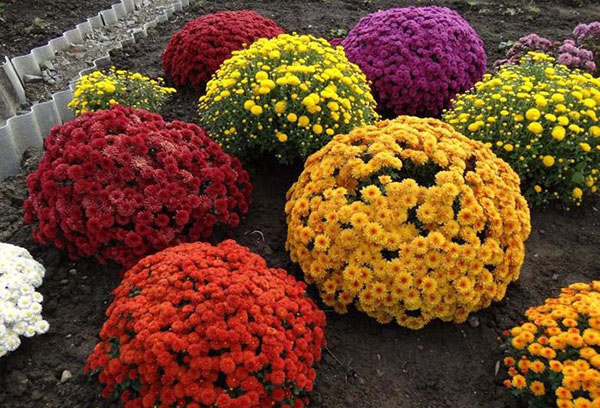
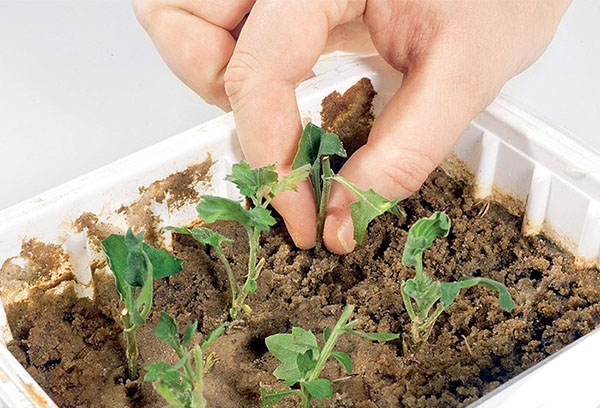
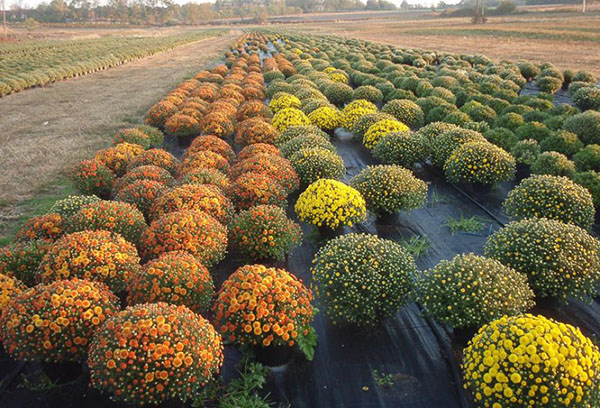

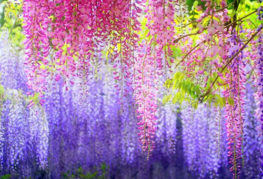
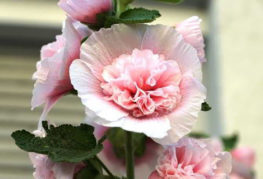
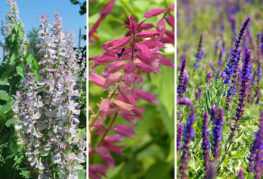

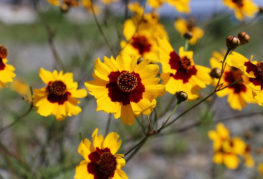
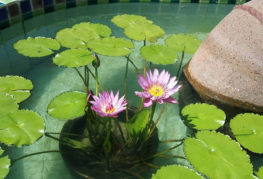
and will be published shortly.